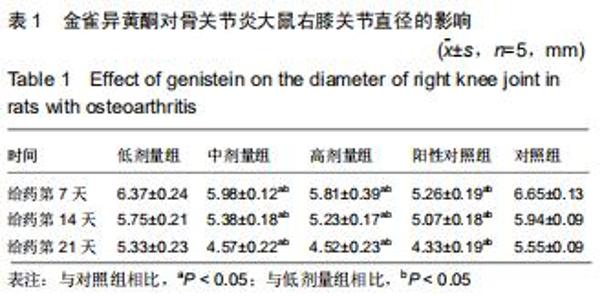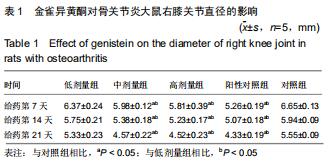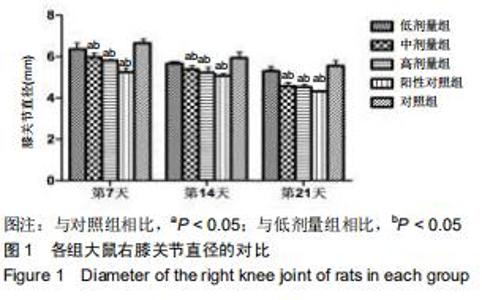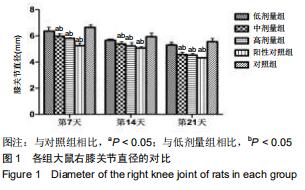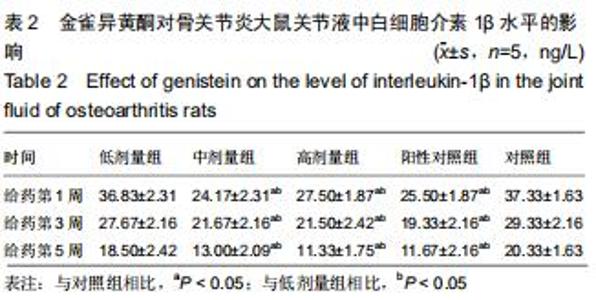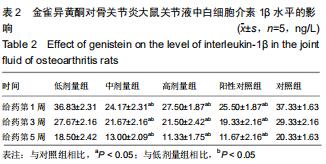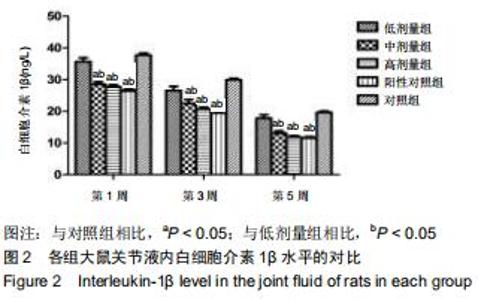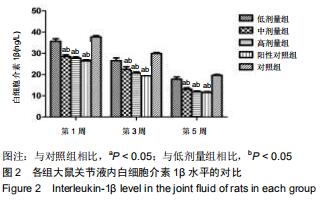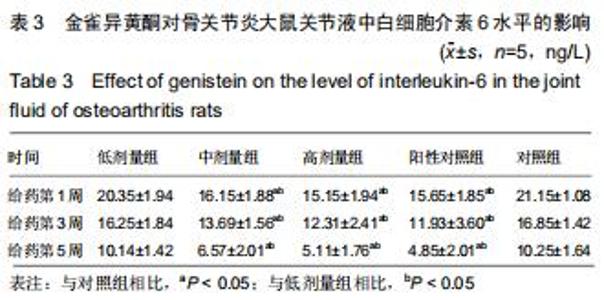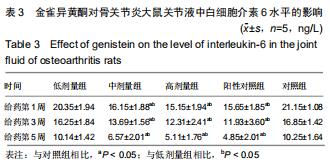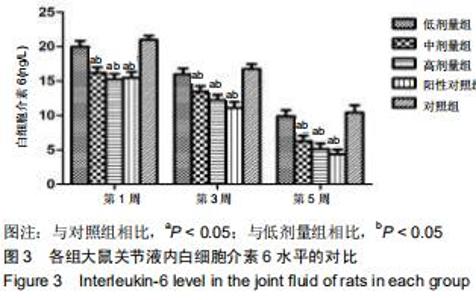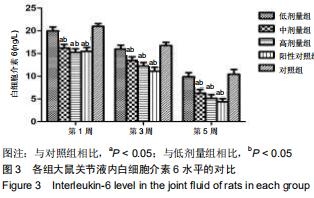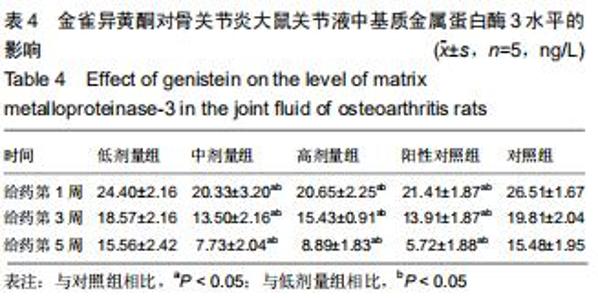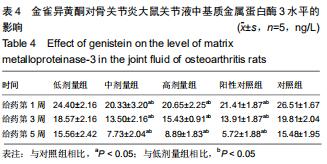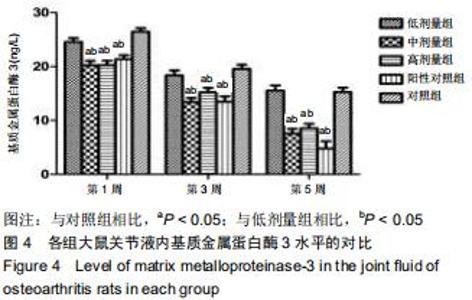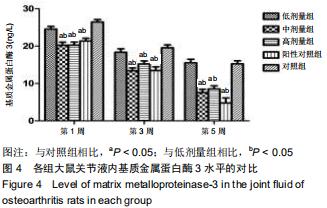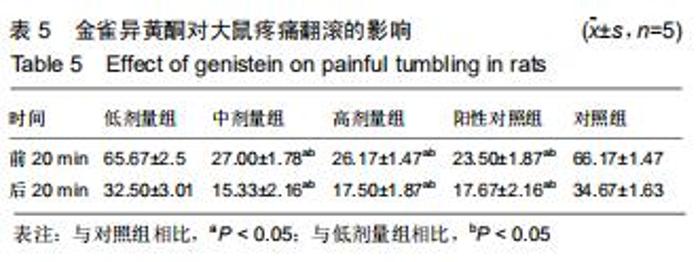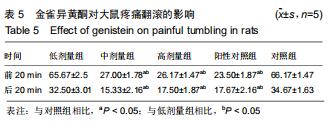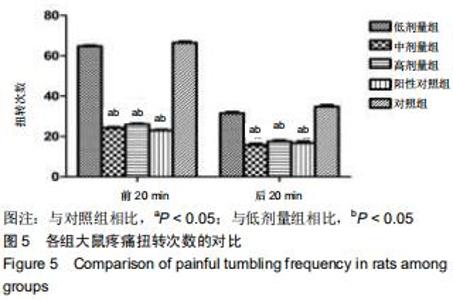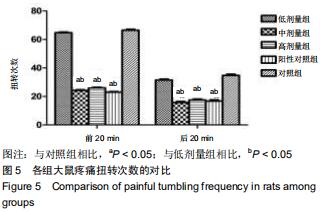|
[1] 廖德发.我国骨性关节炎流行病学调查现状[J].微创医学, 2017, 12(4):521-524.
[2] 刘传文,赵蕾,滕学仁,等.金天格胶囊对膝骨关节炎患者关节液中 MMP-3、TIMP-1、IL-1β、TGF-β1水平的影响[J].中国骨质疏松杂志,2015,21(4):442-446.
[3] 白斌,李燕琴,李曙明,等.丹参对兔骨性关节炎关节软骨白介素- 1β、白介素-6和胰岛素样生长因子-Ⅰ表达的影响[J].中国康复医学杂志,2015,30(10):990-994.
[4] 管宏章.参麦注射液关节腔注射对膝骨性关节炎患者关节液中IL-1和TNF-α水平的影响[J].医学信息, 2014(17):103-103.
[5] 雷文淼,张鸿.独活寄生汤治疗膝骨性关节炎患者的疗效及对患者关节液MMP-3、MMP-9水平的影响[J].陕西中医, 2017, 38(10):1432-1433.
[6] 陈海霞,张开伟,马文娟,等.补肾活血汤干预骨质疏松并骨关节炎模型兔软骨多种细胞因子mRNA的表达[J].中国组织工程研究, 2018,22(32):5123-5132.
[7] 王梦月,卫莹芳,史炎,等.三种活麻水煎液药理作用探索[J].时珍国医国药,2001,12(8):673-674.
[8] 王梦月,卫莹芳,李晓波.荨麻抗风湿活性部位的化学成分研究[J].中草药,2006,37(9):1300-1303.
[9] 任晓霞,杨艳梅,王虹,等.自噬对金雀异黄酮抑制宫颈癌细胞增殖的影响[J].医学研究生学报,2017,30(6):579-583.
[10] 庆敏,王进.miR-200 a与金雀异黄酮对胃癌细胞生长及侵袭能力的影响[J].郑州大学学报(医学版),2018,53(4):474-477.
[11] 韦立群,李婉婷,李通,等.金雀异黄酮对三阴乳腺癌MDA-MB-231细胞凋亡及EGFR/PI3K/Akt通路的影响[J].中国药理学通报, 2017,33(10):1376-1381
[12] 成魁,陈克明,葛宝丰,等.淫羊藿苷与金雀异黄酮骨保护作用的比较研究[J].中国药理学通报, 2014,30(9):1315-1319.
[13] 李浩,宋培源,张新爱,等.金雀异黄酮调节小鼠成骨细胞和破骨细胞的介导受体研究[J].南昌大学学报(医学版), 2017,57(6): 17-22.
[14] 李文学,庄颖,董建丽.同型半胱氨酸诱导内皮细胞炎症损伤及金雀异黄酮的保护作用机制探讨[J].蚌埠医学院学报, 2009,34(3): 188-191.
[15] 李伟,居来提·买提肉孜,迪丽娜·马合木提,等.骨性关节炎模型兔股骨各骨质层体积与力学性能的关联性分析[J].吉林大学学报(医学版),2013,39(4):680-683,后插681.
[16] 张康乐,郭珈宜,刘源,等.低浓度木瓜蛋白酶诱导兔早期膝骨关节炎滑膜炎症的时间曲线[J].中国组织工程研究, 2017,21(36): 5787-5792.
[17] 朱兆荣,关璐,彭诗,等.电针对木瓜蛋白酶致骨关节炎犬血浆中腺苷的影响[J].中国兽医杂志,2018,54(1):31-33,36.
[18] 黄颖花,冶冬阳,李日飞,等.“乌芷跌打膏”的药效学研究[J].动物医学进展,2016,37(6):80-83.
[19] 蔡小华,姚祖凤,颜文斌,等.抗癌药物金雀异黄酮的合成进展[J].吉首大学学报(自然科学版),2001, 22(2):71-74.
[20] 彭维杰,罗丹,康路妹,等.8-PN与异黄酮类植物雌激素对成骨细胞和破骨细胞作用比较研究[C].江西省中西医结合学会内分泌专业委员会第二次学术会议、内分泌与代谢性疾病中西医结合诊治新进展学习班资料汇编.中国江西南昌,2013.
[21] 魏思忱,白文元.大豆异黄酮与肝病[J].临床肝胆病杂志,2006, 22(4):316-318.
[22] 朱建华,徐杰.金雀异黄酮在中枢神经系统的抗衰老作用研究进展[J].四川解剖学杂志,2003,11(4):34-37.
[23] 周建,高玉海,石文贵,等.金雀异黄酮促进体外培养大鼠骨髓间充质干细胞成骨性分化的机制研究[J].解放军医药杂志, 2016, 28(10):1-3,7.
[24] 冯英,涂平生,湛海伦,等.金雀异黄酮对去势大鼠骨质疏松的影响[J].中国骨质疏松杂志, 2007,13(2):105-107.
[25] 张城,宋勇,张艺,等.金雀异黄酮对脂多糖处理的软骨细胞增殖抑制的拮抗及抗炎作用[J].中国生物制品学杂志, 2011,24(2): 184-186,194.
[26] 薛静,伍骥,郑超.基于循证医学指导下的骨关节炎治疗建议[J].中华关节外科杂志(电子版),2013,7(23):2083-2086.
[27] 任硕.膝骨关节炎治疗方案的优化选择[D].济南:山东中医药大学,2010.
[28] 陈文锋,黄海,申文龙.膝骨性关节炎不同中医证型与血清和关节液MMP-3、MMP-7表达的关系[J].浙江中西医结合杂志, 2018, 28(8):660-663.
[29] 李广贤,乔卫平.金骨莲胶囊治疗骨性关节炎疗效及对患者IL-1、IL-6、T N F-α影响的研究[J].陕西中医,2018,39(12):1792-1794.
[30] 秦丰伟,黄荷,焦锋,等.淫羊藿苷和骨髓间充质干细胞共育液对兔骨关节炎模型关节液中IL-1、TNF-α、IL-10、MMP-3表达的影响[J].实用医学杂志,2018,34(17):2876-2879.
[31] 祝俊山,冯秀珍,王金杰,等.黄精制剂对膝骨性关节炎患者血清中IL-1、MMP-13的影响[J].中国中西医结合外科杂志, 2018,24(5): 568-572.
[32] 郑高利.大豆异黄酮的药理作用Ⅰ[J].中国现代应用药学, 1998, 15(1):4-5.
[33] LI J,GANG D,YU X,et al. Genistein: the potential for efficacy in rheumatoid arthritis. Clin Rheumatol.2013;32:535-540.
[34] HU Y,LI J,QIN L,et al. Study in Treatment of Collagen-Induced Arthritis in DBA/1 Mice Model by Genistein.Curr Pharm Des. 2016;22:6975-6981.
|
